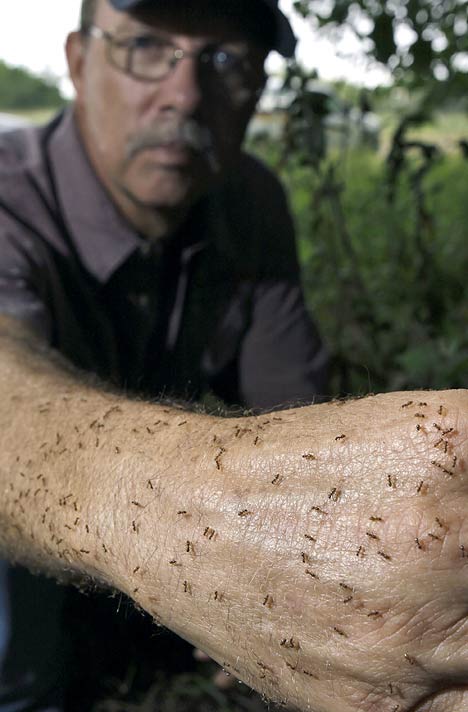Invasion of the 'crazy' ants that destroy every electronic gadget in their pathBy BARRY WIGMOREDaily Mail May. 22, 2008 |
Popular 
Eloy Adrian Camarillo, 17, Arrested in Shooting Death of Infowars Reporter Jamie White

NYT: Trump Ended War With Houthis After They Shot Down U.S. Drones, Nearly Hit Fighter Jets

Ben Shapiro, Mark Levin and Laura Loomer Warn of Foreign Influence... From Qatar

Trump Advisor to Washington Post: 'In MAGA, We Are Not Bibi Fans'

Trump Cut Off Contact With Netanyahu Over 'Manipulation' Concerns, Israeli Reporter Claims
  Enlarge the image Enlarge the imageNobody knows where they came from ... or even exactly what they are. But, like the plot of a low-budget horror film, trillions of tiny 'crazy' ants are invading Texas. They have a liking for computers, other electronics and most of the modern machinery that makes the world go round. Not because they see them, or the associated wiring, as food. In a phenomenon baffling scientists, they simply seem to be attracted to the heat, magnetic fields or the hum and vibrations from machines. But they then go on to destroy them by sheer weight of numbers, shorting out electrical circuits, clogging filters and pipes and bringing moving parts grinding to a halt. Fire alarms have been set off by them, domestic gas meters have seized up and pumping stations at sewage works put out of action. Even Nasa is worried as the unstoppable reddish-brown ants less than an eighth of an inch long head for the Houston space centre. The Russians were so concerned they telephoned to make sure that the orbiting International Space Station is safe. The insects have been called 'crazy' because, unlike other ants which move purposefully in single file, they swarm in random directions. Tom Rasberry, a pest exterminator, first came across a few hundred of the ants in 2002. There are now millions of colonies, spreading out at about half a mile a year. They like to suck the sap from plants, feed on beneficial insects such as ladybirds and eat the hatchlings of a small, endangered type of Texas grouse known as the Attwater prairie chicken. They also bite humans. So far, the Texas crazy ants appear virtually indestructible, with most of the best-selling ant-killers having no effect. But when one of the products does kill, the ants pile up their dead to form a bridge over it and seem to build up an immunity before the next attack. Scientists at Texas A&M University call them 'the ant of all ants' and believe their closest cousins are a species found in Colombia, the Caribbean and Florida. They may have arrived on a ship which docked at Houston's cargo port. |



